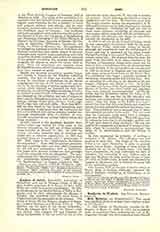

Boniface of Savoy, forty-sixth Archbishop of Canterbury and son of Thomas, Count of Savoy, date of birth uncertain; d. in Savoy, July 14, 1270. While yet a child he became a Carthusian. In 1234, as sub-deacon, he was elected Bishop of Belley in Burgundy: and, in 1241, administered the Diocese of Valence. His connection with the royal house of England secured his promotion to the primacy. The Queen of Henry III was Eleanor, daughter of Berengar, Count of Provence, and Beatrice of Savoy. This Beatrice was the sister of the future archbishop. When St. Edmund died, in 1241, the Queen’s uncle was elected. But Gregory IX and Celestine IV dying unexpectedly, it was not until the end of 1243 that the new Pope, Innocent IV, was able to confirm his election. In the following year Boniface went to England for the first time. He found his see in debt. The heavy taxation during the sequestration in St. Edmund’s primacy had severely burdened its already slender resources. Therefore his first act was to make every economy, abolishing all sinecures and unnecessary offices connected with the archbishopric. He ordered the tenants and clergy to contribute towards the liquidation of the debt.
In 1244 he set out for the Council of Lyons, where he was consecrated (January 15, 1245) by the pope. His brother Philip, afterwards Count of Savoy, although not consecrated, held the archbishopric of Lyons and was in command of the papal troops. During the sitting of the council Boniface held a commission under him. He obtained from the pope the grant of the first-fruits of all vacant benefices in the Province of Canterbury during seven years, and his claim to levy a contribution from the whole province to meet the debt of the metropolitan see was allowed. In 1249 he returned to England and was enthroned with great pomp at Canterbury on All Saints‘ Day. The archbishop then began a personal visitation of his diocese, correcting abuses and levying fines. But, on extending his visitation to the dioceses of his suffragans, resistance was offered to him. In London the Dean and Canons of St. Paul’s protested that the Bishop of London was their visitor and appealed. They were promptly excommunicated. On the following day the archbishop visited the Priory of St. Bartholomew. He was met by the sub-prior and brethren, who welcomed him as a prelate but not as a visitor. Like the clergy of St. Paul’s they represented that they had their own bishop and would not submit to other jurisdiction without permission from him. The archbishop was so incensed that he felled the venerable sub-prior to the earth. This was more than the Londoners could stand from a foreigner, even were he their archbishop. They fell upon him, his vestments were torn in the struggle, and the coat of mail worn beneath them disclosed. He was rescued by his bodyguard and escaped by barge to Lambeth, where he proceeded to excommunicate the clergy of St. Bartholomew‘s and the Bishop of London.
He then announced his intention of holding a visitation at St. Albans. The suffragans met and resolved to resist him. The clergy of the province levied a tax upon themselves in order to proceed against him at Rome. Learning of these things he promptly set out for the Roman court. The result was a compromise, the pope confirming the right of visitation, but restricting its use. Godwin says of him that Boniface did three worthy things: he paid off a debt of 22,000 marks; he built and endowed the hospital at Maidstone; and he finished the great hall of the archbishop’s palace.
Pope Gregory XVI, at the suit of Charles Albert of Savoy, King of Sardinia (1831-49), approved the cult of Boniface, Archbishop of Canterbury, as ab immemorabili.
FRANCIS AVELING

